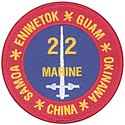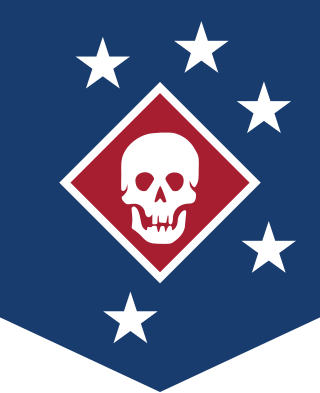
The Marine Raiders are special operations forces originally established by the United States Marine Corps during World War II to conduct amphibious light infantry warfare. "Edson's" Raiders of 1st Marine Raider Battalion and "Carlson's" Raiders of 2nd Marine Raider Battalion are said to have been the first United States special operations forces to form and see combat during World War II.
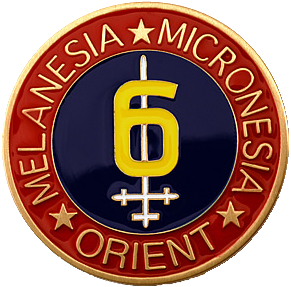
The 6th Marine Division was a United States Marine Corps World War II infantry division formed in September 1944. During the invasion of Okinawa it saw combat at Yae-Take and Sugar Loaf Hill and was awarded a Presidential Unit Citation. The 6th Division had also prepared for the invasion of Japan before the war ended. After the war it served in Tsingtao, China, where the division was disbanded on April 1, 1946, being the only Marine division to be formed and disbanded overseas and never set foot in the United States.

The 1st Marine Division is a Marine division of the United States Marine Corps headquartered at Marine Corps Base Camp Pendleton, California. It is the ground combat element of the I Marine Expeditionary Force.

The 3rd Marine Division is a division of the United States Marine Corps based at Camp Courtney, Marine Corps Base Camp Smedley D. Butler in Okinawa, Japan. It is one of three active duty infantry divisions in the Marine Corps and together with the 1st Marine Aircraft Wing (1stMAW) and the 3rd Marine Logistics Group forms the III Marine Expeditionary Force. The division was first formed during World War II and saw four years of continuous combat in the Vietnam War. Today, elements of the 3rd Marine Division are continuously forward deployed and forward postured to carry out the US Government's mission of a Free and Open Indo-Pacific in conjunction with its sister services.

The 1st Provisional Marine Brigade was a Marine infantry brigade of the United States Marine Corps (USMC) that existed periodically from 1912 to 1950. It was an ad hoc unit formed for specific operations and not considered a "permanent" USMC unit.

The 6th Marine Regiment is an infantry regiment of the United States Marine Corps based at Marine Corps Base Camp Lejeune, North Carolina. The regiment falls under the command of the 2nd Marine Division of the II Marine Expeditionary Force. Its combat history dates back to World War I when they were part of the American Expeditionary Force. They fought in the Pacific Theater in World War II, most notably at the battles of Guadalcanal, Tarawa, Saipan, Tinian and Okinawa. More recently, the regiment has seen combat during the Gulf War and in support of Operation Iraqi Freedom.

On 15 June 1944, United States Marine forces landed on the southwest coast of the island of Saipan in the central Marianas chain; these were followed a day later by US Army forces. This invasion was part of Operation Forager, an effort to recapture the entire Marianas chain from the Empire of Japan.
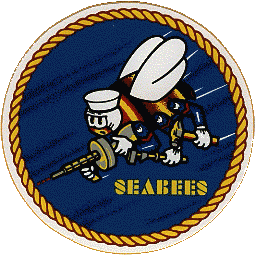
When World War II broke out the United States Naval Construction Battalions (Seabees) did not exist. The logistics of a two theater war were daunting to conceive. Rear Admiral Moreell completely understood the issues. What needed to be done was build staging bases to take the war to the enemy, across both oceans, and create the construction force to do the work. Naval Construction Battalions were first conceived at Bureau of Yards and Docks (BuDocks) in the 1930s. The onset of hostilities clarified to Radm. Moreell the need for developing advance bases to project American power. The solution: tap the vast pool of skilled labor in the U.S. Put it in uniform to build anything, anywhere under any conditions and get the Marine Corps to train it. The first volunteers came skilled. To obtain these tradesmen, military age was waived to age 50. It was later found that several past 60 had managed to get in. Men were given advanced rank/pay based upon experience making the Seabees the highest paid group in the U.S. military. The first 60 battalions had an average age of 37.
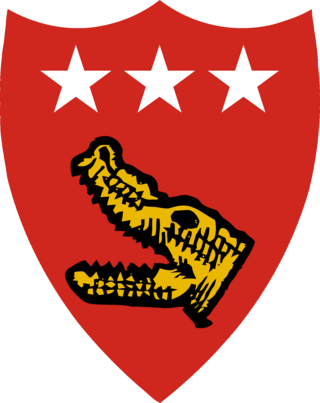
The V Amphibious Corps (VAC) was a formation of the United States Marine Corps which was composed of the 3rd, 4th and 5th Marine Divisions in World War II. The three divisions were the amphibious landing force for the United States Fifth Fleet with two goals, removal of Japanese forces from islands so U.S. Seabees could build advance bases to project US power. In doing this VAC was notably involved in the battles for Tarawa, Saipan, and Iwo Jima. V Amphibious Corps was commanded by General Holland 'Howlin Mad' Smith followed by General Harry Schmidt.

Marine Defense Battalions were United States Marine Corps battalions charged with coastal and air defense of advanced naval bases during World War II. They maintained large anti-ship guns, anti-aircraft guns, searchlights, and small arms to repel landing forces.

The 19th Marine Regiment was a composite engineer regiment of the United States Marine Corps subordinate to the 3rd Marine Division. It existed from September 1942 until September 1944. In December 1943 there was a large change of command in the Regiment. Marine engineer regiments were eventually disbanded in favor of independent engineering battalions within the parent Marine divisions.

The 18th Marine Regiment was a composite engineer regiment of the United States Marine Corps subordinate to the 2nd Marine Division. It was disbanded during the war, with the 1st and 2nd battalions remaining in the Division.

Naval Mobile Construction Battalion 25 or NMCB 25 is a Navy Reserve Seabee unit that is headquartered at Port Hueneme, CA. Its World War II predecessor was one of three CBs transferred to the Marine Corps in the late summer of 1942 as combat engineers. Those three battalions were attached to composite Marine Engineer Regiments as the third battalion of their respective regiment. All of them remained with the Marine Corps for the next two years before they were released and returned to the Navy. At the end of World War II the battalion was decommissioned. In 1961, it was recommissioned in the Naval Construction Force Reserve where it remains today.

3rd Littoral Anti-Air Battalion is a United States Marine Corps aviation command and control and air defense unit that is optimized for operations in the first island chain. The battalion is based at Marine Corps Base Hawaii and falls under the command of the 3rd Marine Littoral Regiment and the 3rd Marine Division.

John Thaddeus Walker was a highly decorated officer of the United States Marine Corps, who reached the rank of lieutenant general. He is most noted as commanding officer of the 22nd Marine Regiment during Battle of Eniwetok. He later served as director of personnel or commanding general of the Marine Corps Recruit Depot San Diego.

Charles Fred Widdecke was a highly decorated officer of the United States Marine Corps who reached the rank of major general. Widdecke received the Navy Cross, the United States military's second-highest decoration awarded for valor in combat, for his actions during the Recapture of Guam in July 1944. He later commanded the 1st Marine Division at the end of Vietnam War.

The American invasion of the island of Okinawa, codenamed Operation Iceberg, took place 1 April 1945. The Japanese military was determined to inflate a casualty rate so high that the U.S. government would choose not to invade the Japanese home islands. To this end, the southern portion of the island had been covered with the most extensive system of fortifications and fields of fire yet encountered in the Pacific War.

On 21 July 1944, United States Marine and Army forces invaded the island of Guam, the southernmost of the Mariana Islands chain in the Central Pacific, with the intent to take control of the island from the Imperial Japanese Army. Operation Forager II, as it was called by American planners, was a phase of the Pacific Theatre of World War II.
The 14th Antiaircraft Artillery Battalion was an antiaircraft unit in the United States Marine Corps that served during World War II. The battalion was originally formed in 1943 as the 14th Defense Battalion. Its mission was to provide air and coastal defense for advanced naval bases. During the war the battalion took part in combat operations in the Solomon Islands and on Guam. The battalion was decommissioned on June 30, 1945. Since then no other unit has carried the lineage and honors of the 14th Antiaircraft Artillery Battalion.

On 15 September 1944, United States Marine Corps forces landed on the southwestern shore of the island of Peleliu in the Palau island chain, 470 nautical miles due east of the Philippine island of Mindanao. This action, called Operation Stalemate II by American planners, was a phase in the Pacific Theatre of World War II. Whether possession of the island was necessary for the Allied cause has been the source of much controversy.
